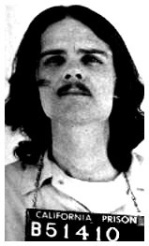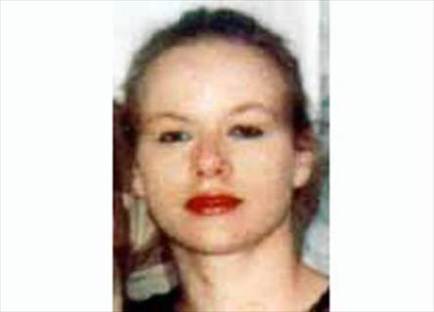The Dead Man Talking Project
Hunting for Long-Gone Serial Killers: Inside the Dead Man Talking Project
Two California prosecutors are teaming to up to gather the DNA of deceased murderers and use it to close unsolved murders. But tracking down the saliva of a dead man isn’t always easy. Christine Pelisek reports.
By day, she runs the sex-crimes division of the Los Angeles County district attorney’s office. In her spare time, she tracks down the DNA of dead rapists, murderers, and serial killers.
Carol Burke is on a mission to cross off as many cold cases as she can by matching swabs of known felons with evidence from unsolved-crime scenes. With Anne Marie Schubert, who is in charge of child-abuse cases upstate in the Sacramento D.A.’s office, Burke helps to run a project called Dead Man Talking, which has brought the pair closer than ever to bringing justice to the cases of some of the most sadistic serial killers in California history—even if the culprits themselves are long gone.
“It’s really rewarding,” Burke says of the project. “There is a lot of value to it, even though we can’t prosecute the offenders because they are dead. Families can at least have some closure. They finally know what happened to their loved ones.”
California has a DNA data bank that stores close to 2 million felon profiles. It also contains some 25,000 pieces of crime-scene evidence from murders, rapes, robberies, and burglaries—semen from a bed sheet, or a cigarette butt—that have never been linked to an offender.
Burke and Schubert believe that adding to the list of felon profiles could close countless unsolved cases. But a surprising number of known offenders are missing from the database. Schubert says that since 1984, close to 25,000 inmates have died in a California prison or on parole. Of those, nearly 19,000 were not swabbed for DNA before they died. Over 40 of them were death-row inmates.
Finding traces of these men can be extremely difficult, especially for two women with full-time jobs and no staff. Burke and Schubert are focusing first on death-row inmates and then widening their net to offenders who were sentenced to life in prison without the possibility of parole.
Each has their own white whale. Burke is devoted to tracking down the DNA of notorious “Freeway Killer” William Bonin, so called because many of his victims were left by the side of freeways in Southern California. “He’s my No. 1 target,” Burke says. “He was a really bad guy. He was so prolific.”
Bonin was convicted of kidnapping, robbing, sexually assaulting, and killing 13 boys and young men in Los Angeles and Orange counties between 1979 and 1980. After he was arrested, Bonin, who had worked alongside various accomplices, including a factory worker named Vernon Butts, confessed to killing 21 young boys and young men, some of them he had picked up hitchhiking. Police believe his body count is closer to 30.
However, when Bonin was executed in San Quentin State Prison in 1996 before submitting a DNA sample, any hope of linking him to more killings died with him.
“I originally assumed they autopsied people in San Quentin,” says Burke. “That’s not the case. They were only autopsying people who committed suicide or were killed in prison. So someone who died of natural causes or was executed like Bonin was not autopsied.”
Burke says Bonin’s court files and trial exhibits have been destroyed. Nor has she had any luck finding his blood, semen, or saliva with the Los Angeles or Orange County police departments or with the coroner’s office. An attempt to track down the DNA of Butts, who Bonin said was an active participant in many of the murders, almost came to fruition when she discovered that he had committed suicide in a Los Angeles County jail and was autopsied. But, she said, law-enforcement personnel destroyed the forensic evidence in 2010.The dead ends can be frustrating. “Bonin is the most notorious and the one who most likely left unsolved murders in his wake,” Burke says. “It sure would be great to get his sample so we could solve some of the unsolveds out there.”Recently she found better luck in the case of Roland Comtois, who abducted two teenaged girls in 1987, killed one, and sexually assaulted the other. The 65-year-old inmate died in a prison hospital from an infection in 1994, but was never autopsied. But Burke’s sleuthing uncovered a bloody shirt that had belonged to the killer—left when police shot him trying to escape arrest and stored as evidence. So far, his DNA has not been linked to any new murders.
Schubert, who created Dead Man Talking in 2008, started the project in part to solve some of Sacramento County’s most notorious serial-killer cold cases that date back to the ’70s.
“It was a killing field, and not just here,” she says. “The number of body dumps across the state was enormous.”
One of the killers high on her list is the “Original Night Stalker,” who is believed to be responsible for over 50 rapes that began in Northern California and ended with multiple murders in 1986 in Santa Barbara, Orange, and Ventura counties.“It terrified Sacramento and the region,” says Schuster, who was a child when the attacks began. “We still haven’t solved it. It’s highly likely that he has died in prison.”Schubert spent over a year searching for the DNA of serial killer Gerald Gallego, who along with his wife was responsible for the sex-slave murders of 10 young women in California and Nevada in the late ’70s. Gallego, who was sentenced to death in both states, died in 2002 of rectal cancer in Nevada and was never swabbed.Eventually, Schubert says, she found a saliva sample buried inside 14 boxes at a clerk’s office.
“I can say he was suspected in multiple murders and not just the ones he was convicted of,” she says.
Last year the pair had their first major success when they linked L.A. serial killer Juan Chavez to the unsolved murder of 60-year-old Lynn Penn. Penn was found strangled in his apartment in July 1990.
Chavez committed suicide three months after he was convicted of killing five gay men. Schubert discovered that Chavez had been autopsied, and a sample of his blood was still in evidence. His DNA was uploaded into the DNA data bank and last February it was linked to saliva found on a cigarette butt discovered inside Penn’s apartment.
“I think I screamed,” said Schubert when she learned of the DNA hit. “I remember where I was. It’s like how everyone remembers where they were when Elvis died.”Schubert is hoping to expand the project statewide and hire a full-time investigator. However, cold-case grants are hard to come by. Last year they were turned down for funding for the project.
“There are probably some people out there that are like, these guys are dead; it doesn’t matter. I don’t think that at all,” she says. “It does matter. It’s about seeking justice for those who were harmed by these people.”
I think it matters and I think it is very important to give the families closure. I applaud these two ladies and hope that the criminal justice system gets behind them.










